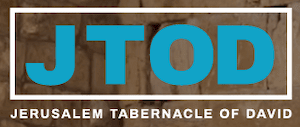In the ancient tradition of the Body of Messiah in the Eastern half of the world, the New Testament was written down in Aramaic, delivered to the Elders of the Eastern Church, and then quickly translated into Greek for the benefit of Europe and the West.
Why Aramaic and not Greek? First of all, first-century CE Israeli Jews considered Greek to be a pagan foreign language which contained the names of false gods, never to be pronounced by the faithful. As Josephus wrote:
“I have also taken a great deal of pains to obtain the learning of the Greeks, and understand the elements of the Greek language, although I have so long accustomed myself to speak our own tongue, that I cannot pronounce Greek with sufficient exactness; for our nation does not encourage those that learn the languages of many nations, and so adorn their discourses with the smoothness of their periods; because they look upon this sort of accomplishment as common, not only to all sorts of free-men, but to as many of the servants as please to learn them. But they give him the testimony of being a wise man who is fully acquainted with our laws, and is able to interpret their meaning; on which account, as there have been many who have done their endeavors with great patience to obtain this learning, there have yet hardly been so many as two or three that have succeeded therein, who were immediately well rewarded for their pains.” —Antiquities of Judeans XX, XI.
For many text comparison examples, FREE download:
“Was the New Testament Really Written in Greek?” With contributions from Andrew Gabriel Roth, Paul Younan.
Was the New Testament Really Written in Greek? (PDF)
Brooke Westcott, Greek scholar, of Westcott and Hort fame, had this to say about the Aramaic Peshitta (Eastern) text of the New Testament:
Brooke Westcott on the Peshitta (PDF)
Paul Younan, Aramaic scholar: “Native Aramaic spells Arabia (the geographic name) with an Aleph, which is how we know that the Peshitta NT wasn’t originally translated from Hebrew. However, we (aramaic speakers) spell “Arab” (the ethnicity) with an Ayin. For reference, see Acts 2:11 for “Arab” (the ethnic designation) spelled with an Ayin.” – Paul Younan

There are well known claims from Eusebius et al that Matthew was written in Hebrew. I disagree slightly. “In the Hebrew tongue,” actually means the “in the dialect in use by the Hebrew people at the time,” which was Aramaic after the return from Babylon. I give Acts 1:19 as one example. The name for “field of blood” given there (“Khagel Dema”) is Aramaic, whether read in Aramaic or Greek, where the Greek scribe explains the meaning in a gloss which does not appear in the Peshitta. So Eusebius meant Aramaic as the Hebrew tongue. Even if I’m wrong, and Eusebius meant Hebrew and not Aramaic, it doesn’t practically matter since all that’s survived is Aramaic. And that’s over 360 mss. strong. – Teddy Chadwick

Archive link for “Was the New Testament Really Written in Greek:”
https://archive.org/details/WastheNewTestamentReallyWritteninGreek1e
Related articles:
Aramaic Bible Complete: George Lamsa
Aramaic English New Testament (AENT) Hardcover

